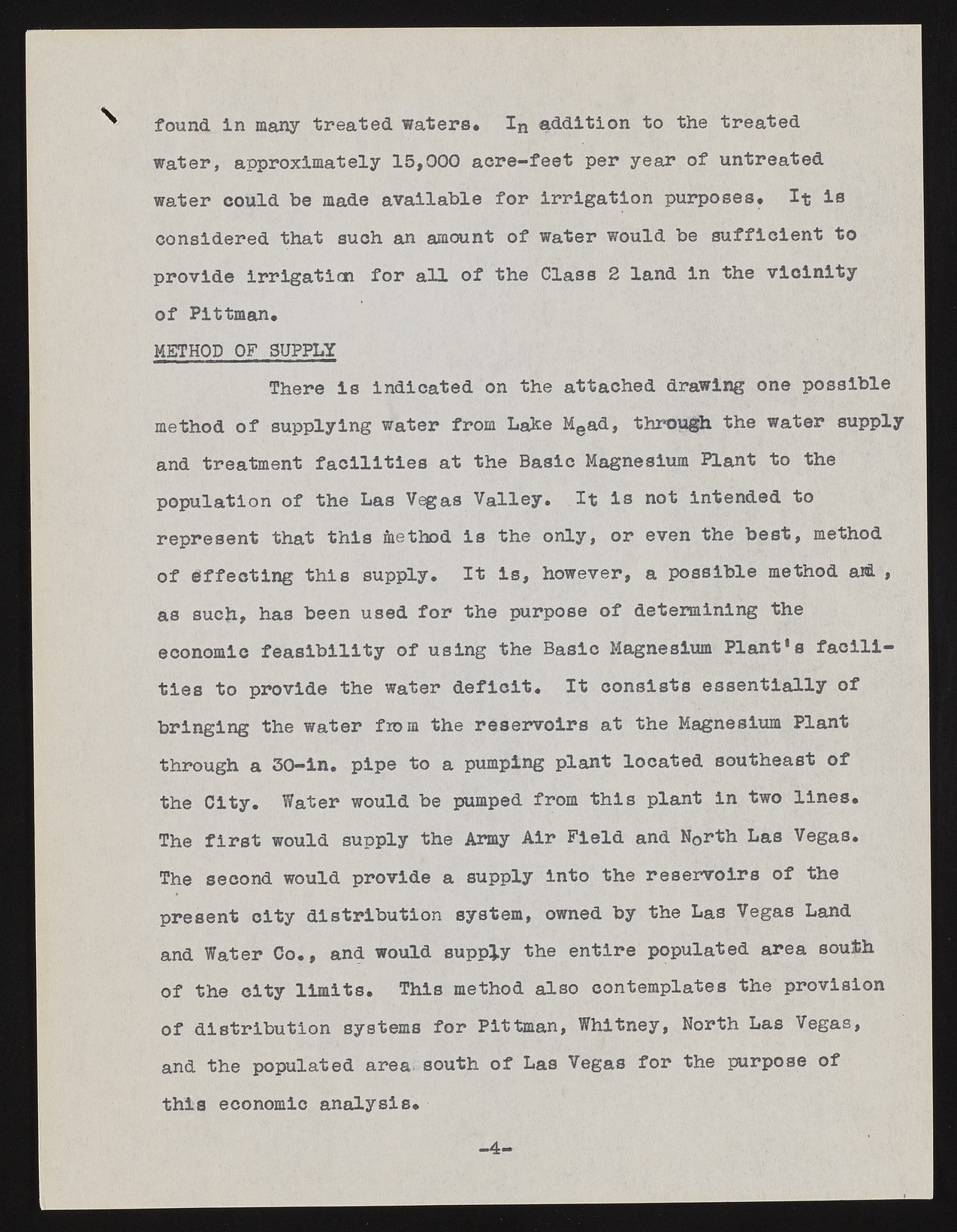Copyright & Fair-use Agreement
UNLV Special Collections provides copies of materials to facilitate private study, scholarship, or research. Material not in the public domain may be used according to fair use of copyrighted materials as defined by copyright law. Please cite us.
Please note that UNLV may not own the copyright to these materials and cannot provide permission to publish or distribute materials when UNLV is not the copyright holder. The user is solely responsible for determining the copyright status of materials and obtaining permission to use material from the copyright holder and for determining whether any permissions relating to any other rights are necessary for the intended use, and for obtaining all required permissions beyond that allowed by fair use.
Read more about our reproduction and use policy.
I agree.Information
Digital ID
Permalink
Details
More Info
Rights
Digital Provenance
Publisher
Transcription
^ found in many treated waters* In addition to the treated water, approximately 15,000 aore—feet per year of untreated water could be made available for irrigation purposes. It Is considered that such an amount of water would be sufficient to provide irrigation for ell of the Class 2 land in the vicinity of Pittman. METHOD OF SUPPLY There is indicated on the attached drawing one possible method of supplying water from Lahe Mead, through the water supply and treatment facilities at the Basie Magnesium Plant to the population of the Las Vegas Valley. It is not intended to represent that this ðod is the only, or even the best, method of affecting this supply. It is, however, a possible method aid , as such, has been used for the purpose of determining the economic feasibility of using the Basic Magnesium Plant*s facilities to provide the water deficit. It consists essentially of bringing the water from the reservoirs at the Magnesium Plant through a 30-in. pipe to a pumping plant located southeast of the City. Water would be pumped from this plant in two lines. The first would supply the Army Air Field and N0rth Las Vegas. The second would provide a supply into the reservoirs of the present city distribution system, owned by the Las Vegas Land and Water Co., and would supply the entire populated area south of the city limits. This method also contemplates the provision of distribution systems for Pittman, Whitney, North Las Vegas, and the populated area south of Las Vegas for the purpose of this economic analysis. -4-

